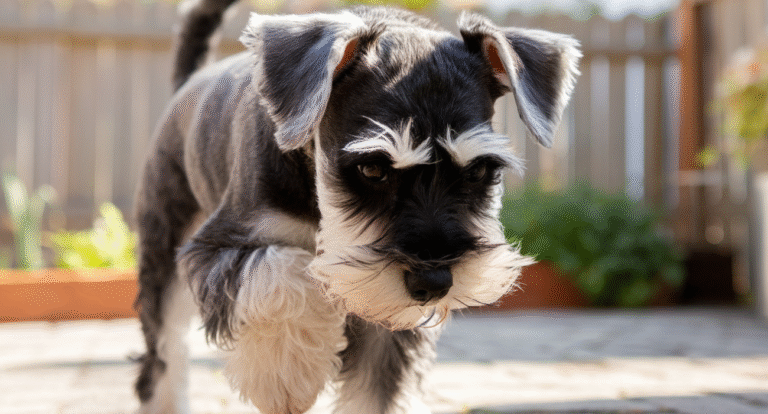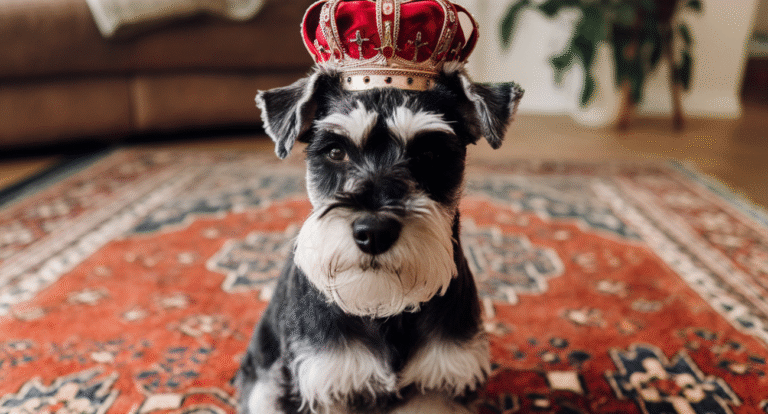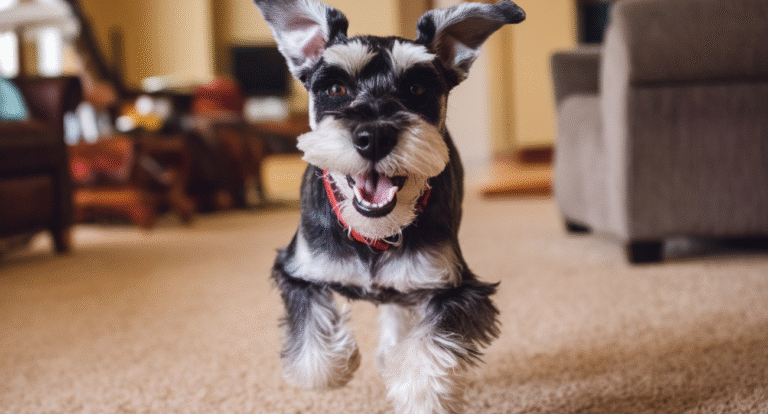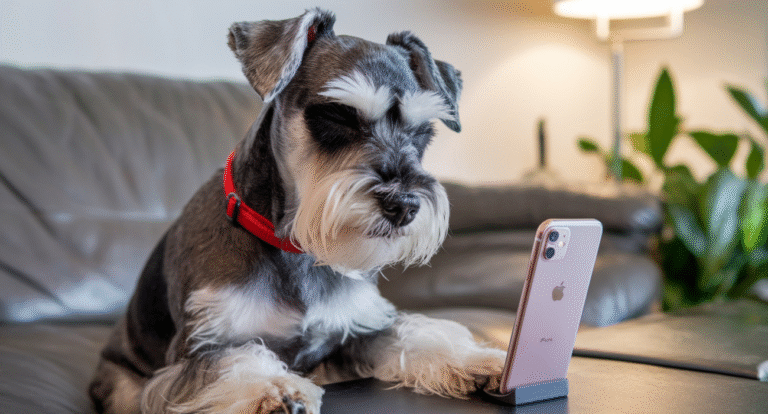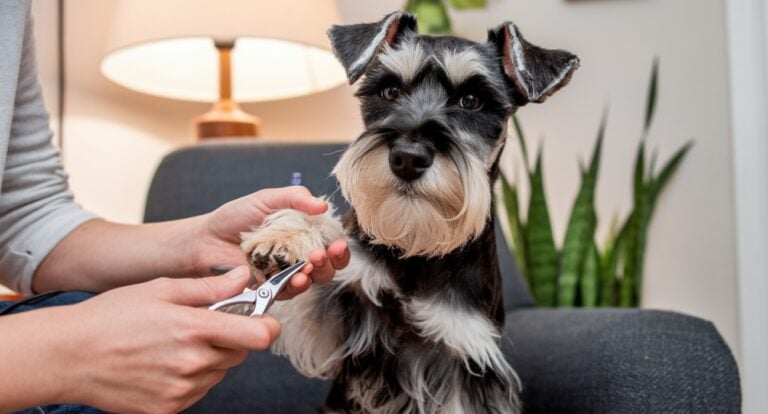Training isn’t just about obedience. Learn how to use it as a bonding tool that strengthens your connection with your schnauzer.
Your Miniature Schnauzer just stole your favorite sock (again), is barking at the mailman (for the third time today), and has somehow convinced themselves that your new couch is actually an elaborate chew toy. Sound familiar? Here’s the plot twist: all of this “misbehavior” is actually your dog trying to communicate with you. They’re not being difficult; they’re being Miniature Schnauzers. And once you learn to speak their language through training, you’ll discover that beneath all that spirited energy lies a companion desperate to please you.
Receive Content Just Like This to Your Inbox Every Morning
The Secret Language of Schnauzers
Schnauzers are basically furry professors trapped in adorable 15-pound bodies. They’re incredibly intelligent, which means they’re always thinking, always processing, and always trying to figure out what you want from them. The problem? Most of us are speaking English while they’re fluent in Body Language, Treat Currency, and Emotional Energy.
Training bridges this communication gap in the most beautiful way possible. Every time you teach your Schnauzer a new command, you’re not just adding to their skill set; you’re expanding your shared vocabulary. “Sit” becomes “I need your attention.” “Stay” translates to “Trust me, good things are coming.” “Come” means “We’re a team, and I need you with me.”
Training isn’t about dominance or control. It’s about creating a shared language where both you and your Mini Schnauzer can express love, trust, and partnership in ways that transcend species barriers.
The Joy Factor: Why Fun Training Creates Stronger Bonds
Forget everything you know about stern, militaristic dog training. Your Mini Schnauzer didn’t sign up for boot camp; they signed up for life partnership. The most effective training happens when it feels like play, not work.
Think about it: when was the last time you bonded with someone during a boring lecture? Never, right? But remember that friend who taught you to play guitar by turning everything into a game? That’s the energy you want to bring to training sessions with your Schnauzer.
Short, enthusiastic training bursts work wonders. Five minutes of teaching “spin” while you’re both giggling (yes, dogs giggle in their own way) creates more connection than thirty minutes of repetitive drill work. Your Schnauzer starts associating training time with fun time, which means they’ll seek out these learning moments instead of avoiding them.
| Training Session Type | Duration | Frequency | Bonding Impact |
|---|---|---|---|
| Fun & Games | 5-10 minutes | 2-3 times daily | High – Creates positive associations |
| Structured Practice | 15-20 minutes | Once daily | Medium – Builds consistency |
| Long Training Sessions | 30+ minutes | Occasional | Low – Risk of frustration/fatigue |
Building Confidence Through Clear Communication
Here’s something most people don’t realize: stubborn Mini Schnauzers are usually just confused Mini Schnauzers. That defiant head tilt isn’t attitude; it’s uncertainty. They want to please you so badly, but they’re not sure what success looks like.
Consistent training gives your dog a roadmap to your heart. When they know exactly what “good dog” behavior looks like, they can repeat it endlessly. And trust me, nothing makes a Mini Schnauzer happier than being told they’re a good dog (except maybe stealing socks, but we’re working on that).
Clear boundaries aren’t restrictions; they’re freedom. A Mini Schnauzer who understands the rules is a Mini Schnauzer who can relax, play, and love without constantly worrying about whether they’re doing something wrong.
The Trust Building Power of Patient Training
Let’s be real for a moment: your Mini Schnauzer is going to mess up. A lot. They’re going to forget commands, get distracted by squirrels, and occasionally look at you like you’re speaking Martian. This is where the real bonding happens.
Every time you respond to their mistakes with patience instead of frustration, you’re making a deposit in the trust bank. Your Schnauzer learns that you’re not just their trainer; you’re their safe space. You’re the person who believes in them even when they can’t quite remember what “down” means when there’s a pizza box nearby.
This patience creates something magical: a dog who’s eager to try new things because they know failure isn’t the end of the world. They become more adventurous, more confident, and more willing to engage with you in new ways.
Training That Transforms Daily Life
The beautiful thing about bonding through training is how it ripples into every aspect of your life together. That loose leash walking you practiced? It turns every stroll into a cooperative adventure instead of a battle of wills. The recall training? It means freedom at the dog park and safety in unexpected situations.
But here’s the really magical part: trained behaviors become expressions of love. When your Schnauzer sits automatically before you put their leash on, they’re not just following a command. They’re saying, “I’m so excited for this walk that I can barely contain myself, but I’ll wait because I trust that you’ll make it worth it.”
The Partnership Evolution
As your training journey progresses, something incredible happens. Your Mini Schnauzer stops just obeying commands and starts anticipating your needs. They begin reading your body language, your energy, your emotions. They become your emotional support schnauzer without any formal training because the foundation of communication you’ve built extends far beyond simple commands.
You’ll notice them checking in with you during walks, offering comfort when you’re sad, and celebrating your victories with enthusiastic tail wags. This isn’t accident; it’s the natural result of a relationship built on mutual understanding and trust.
The strongest human-dog bonds aren’t built on dominance or even treats. They’re built on communication, patience, and the shared joy of learning together.
Beyond Sit and Stay: Training as Love Language
Some people show love through gifts. Others through quality time. Your Mini Schnauzer? They show love through eager participation in training. Every time they master a new skill, they’re essentially saying, “Look what I learned for you!” Every successful training session is a love letter written in tail wags and focused attention.
And here’s the secret sauce: the more you train together, the more tuned in to each other you become. You start noticing the subtle difference between their “I’m confused” head tilt and their “I’m being selectively deaf because there’s a cat outside” head tilt. They start reading your moods and adjusting their energy accordingly.
The Ripple Effect of Connection
Training your Mini Schnauzer creates a positive feedback loop that strengthens your bond exponentially. As they become more responsive to you, you naturally want to spend more time with them. As you spend more quality time together, they become more attuned to your needs and emotions. Before you know it, you’re not just owner and pet; you’re genuine life partners.
This partnership extends to everyone in your household too. A well-trained, confident Mini Schnauzer is more social, more relaxed around visitors, and generally more pleasant to live with. They become the dog that everyone wants to be around, which means more socialization opportunities and an even richer life for both of you.


